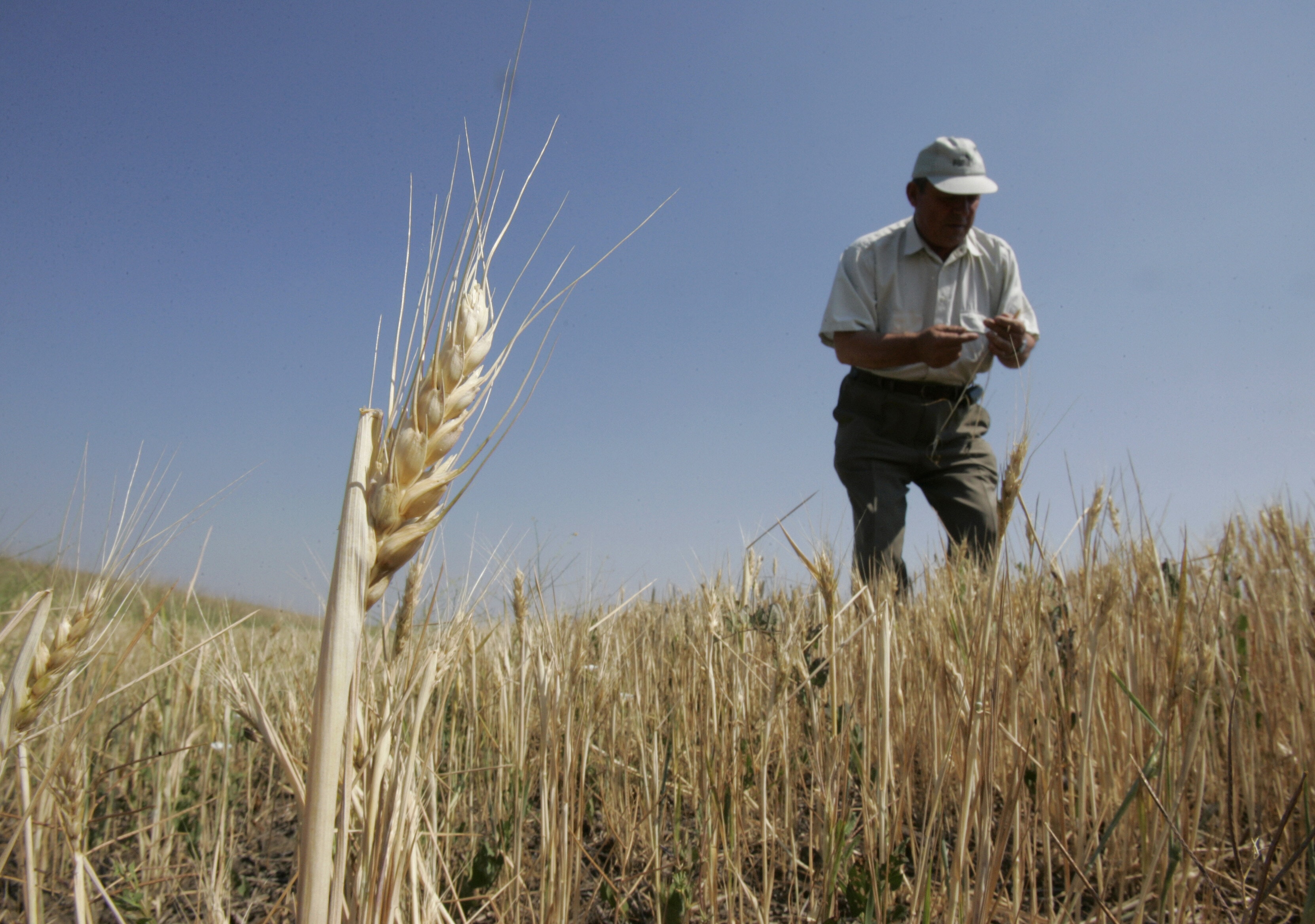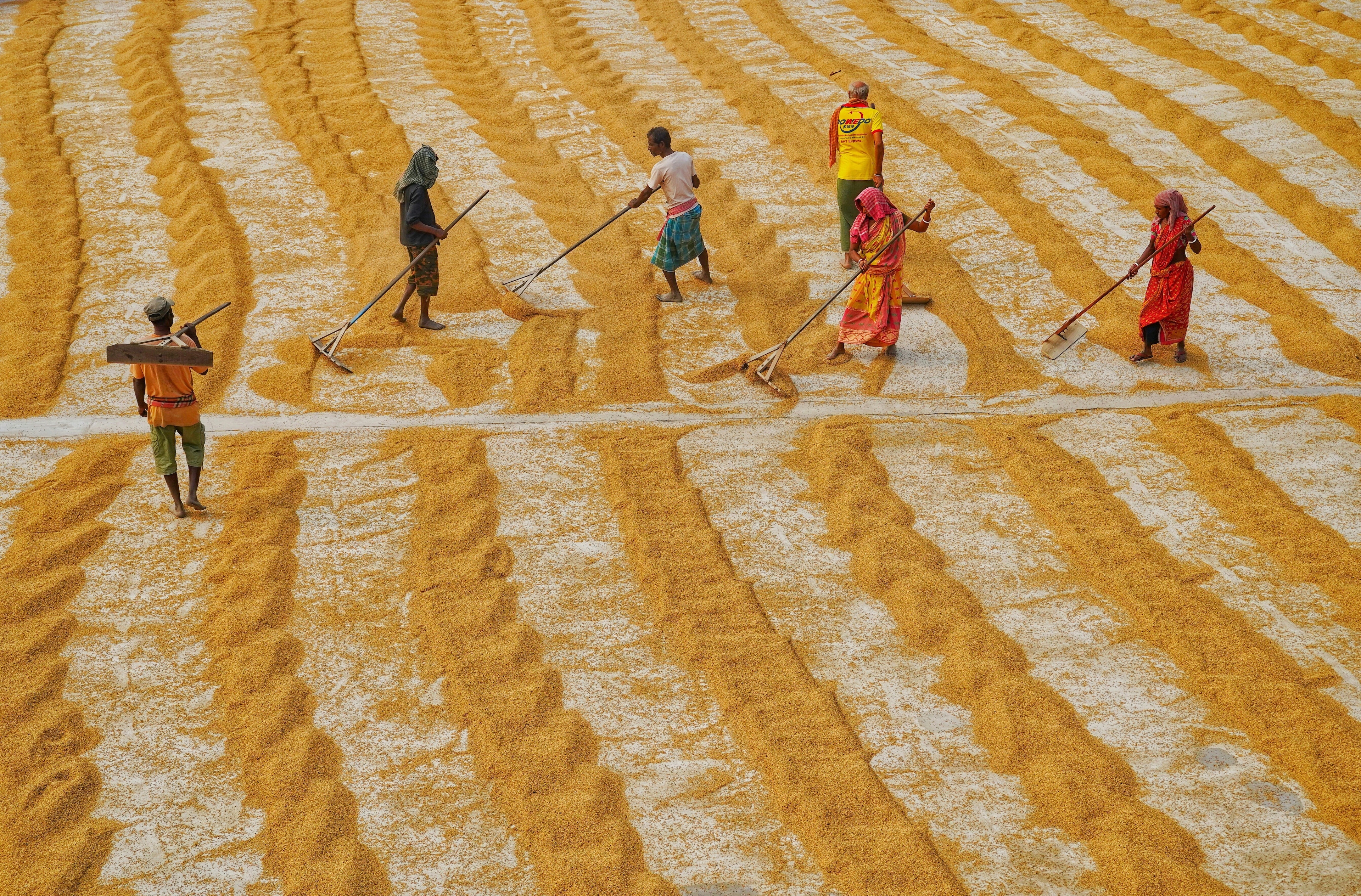The pandemic is just another sign of our broken food system

Should the answer to feeding more people be to produce more food when so much is wasted?
Image: REUTERS/Ben Nelms
Stay up to date:
SDG 13: Climate Action
- A recent report proposes a 50% increase in global food production will be required to feed the world's population in 2050;
- Forests and savannah will be stripped and repurposed into arable land, ecosystems will be lost and intensive monoculture farming techniques will degrade land in a bid to produce more food;
- Producing more food will also not tackle the vast amount of food that is wasted before – and after – it reaches our plates.
As many as 265 million people around the world are suffering from food insecurity and possible starvation, intensified by the COVID-19 pandemic. The World Food Programme has warned of widespread famines “of Biblical proportions” and its latest report is a stark reminder of the disconnects in our global food supply system and the need to examine and overhaul its dire insufficiencies.
A World Resources Institute (WRI) report states that global food production would have to increase by 50% to feed the world’s 10 billion mouths in 2050, requiring a landmass twice the size of India. Food security is clearly as hot a topic as ever, but amidst the urgency, there is a fundamental need to question the underlying assumptions and the veracity of the claims research in this area makes. Furthermore, as the pandemic exposes the fragility of global supply chains, do we now need a complete rethink of our food production and self-sufficiency systems?
Firstly, the numbers used appear to come from projections based on current-day food production practices and consumption patterns in the West and enable the very dangerous assumption that these should be accepted as the norm. The extreme conclusion is drawn from an extrapolation that predicts the worst-case scenario for an overpopulated world confronted with planetary constraints, but without confronting some very inconvenient truths about current-day global production and consumption of food.
Using this approach – given current evidence – large segments of the human race would paradoxically implode from global gluttony. Overconsumption of food is a trend that is an economic construct of the modern agro-industrial complex, not an accident or an unintended consequence. In the pursuit of feeding an overpopulated world, we would wilfully encourage overeating. We would also deplete our freshwater supplies, wildly miss our global greenhouse gas budget and plunge humanity into a health crisis as we scramble to grow and produce cheap, unhealthy food.
Our current global food crisis is a product of – and even thrives upon – an incredibly wasteful process of production and consumption that is abetted by an avaricious global economic system which under-prices food products (leading to distortions in consumption) and their constituents along the entire value chain. It has even made formerly self-sufficient countries dependent on a global marketplace driven by price volatility and competition.
As consumption expands, forests and savannah will be stripped and repurposed into arable land, destroying natural systems, expediting loss of biodiversity and exacerbating land degradation with intensive monoculture farming techniques. This repurposing persists under the guise that growing more food is needed to feed a hungry planet. Human encroachment on nature (predominantly for food production) is a critical factor in how pandemics arise – three out of every four emerging diseases are spread this way.
Agriculture is responsible for up to 70% of the world’s freshwater use, taking rivers, lakes and aquifers to breaking point, and 20% of global greenhouse gas production. The biodiversity and environmental losses of damaging and wasteful agricultural practices are incalculable. Take, for example, the slash-and-burn techniques in the Amazon or Borneo rainforests that engulf entire nations in smoke and haze.
Tragically, much of the food produced from this global abuse is not even consumed. Around 30% of food wastage occurs before it reaches the consumer; in some countries, this is as high as 50%. Developed countries cannot seem to finish what’s on their plates, as 61% of food waste occurs at the consumption stage in the Americas and 52% in Europe, yet only 13% in South and South-East Asia and just 5% in Sub-Saharan Africa. It is a hungry planet not because we do not grow enough food but because we waste copious amounts when it’s right in front of us.
Accept our marketing cookies to access this content.
These cookies are currently disabled in your browser.
Do we really need a 50% increase in food production if at least 35% of all food is wasted and global obesity rates are rising steeply? If food self-sufficiency and healthy diets are to be the new policy focus in a post-pandemic world, everything changes when growing sufficient essential staples, rather than creating vast surpluses controlled by fickle markets with no concern for externalities, becomes the driving force.
We have a food-storage and distribution problem, alongside a systemic and growing gluttony problem, not just a production problem. Tackling the combined complexities of these problems would make a huge impact: as the global population increases, we would lessen the impact on the climate and water crisis, reduce biodiversity losses and slow the global obesity epidemic. In this century, we aren’t what we eat but what we grow; where we grow it is how we will survive.
Instead of this seemingly obvious approach, we are running a race to the bottom in which quantity and variety of food, at any time of year, is seen as a human right in the globalized world. Our current economic model does not reward gains in consumption efficiency or resource conservation, but rather in production and purchasing effectiveness. Externalities are conveniently ignored and innovation stunted. As a result, we are stuck iteratively trying to maximize production efficiency rather than minimizing food waste along the supply chain.
A clear strategy to reduce the severity of climate change is to produce less and eat less. One way to do this is to price food correctly. Take meat, for example. It takes 2.5 thousand litres of water and 2.7 kilograms of CO2 to grow a kilogram of rice, but 15.5 thousand litres of water and 27 kilograms of CO2 to produce a kilogram of beef. Livestock uses more than 70% of global agricultural space yet is responsible for less than 20% of global calorie supply. These externalities and climate impacts are not priced into meat products, enabling developed countries to consume in excess of 100% extra protein than they require.
Governments need to urgently overhaul their agricultural policies with a view to self-sufficiency and account for the cost of externalities in the price of food products through appropriate economic interventions. If this were done, there is no doubt that we would see agribusinesses reduce their relentless expansion, distributors reduce transmission losses and consumers reduce plate-wastage.
The 50% metric of food increase should not be viewed as a target, but as a warning that we have not understood the opportunity to reimagine the entire agriculture and food production cycle to address the four existential challenges of our times: climate change, water crisis, biodiversity loss and the spread of global gluttony.
The adverse global consequences of increasing current food output by 50% in just 30 years need to be addressed. There is an obvious alternative: we need to produce and consume less food, while governments must take steps to ensure this through a focus on self-sufficiency and pricing the food supply chain correctly. The pandemic provides an opportunity to overhaul outdated approaches to feeding the world.
Don't miss any update on this topic
Create a free account and access your personalized content collection with our latest publications and analyses.
License and Republishing
World Economic Forum articles may be republished in accordance with the Creative Commons Attribution-NonCommercial-NoDerivatives 4.0 International Public License, and in accordance with our Terms of Use.
The views expressed in this article are those of the author alone and not the World Economic Forum.
Related topics:
Forum Stories newsletter
Bringing you weekly curated insights and analysis on the global issues that matter.
More on Food and WaterSee all
Tom Crowfoot
August 14, 2025
Sikander Bizenjo and Eric Shahzar
August 14, 2025
Aurora Matteini and Derek Baraldi
August 6, 2025
Mauro Gianni and Isidora Kosta
August 4, 2025
Hu Xiangdong and Felipe Carazo
August 1, 2025






